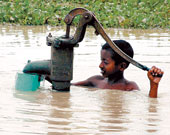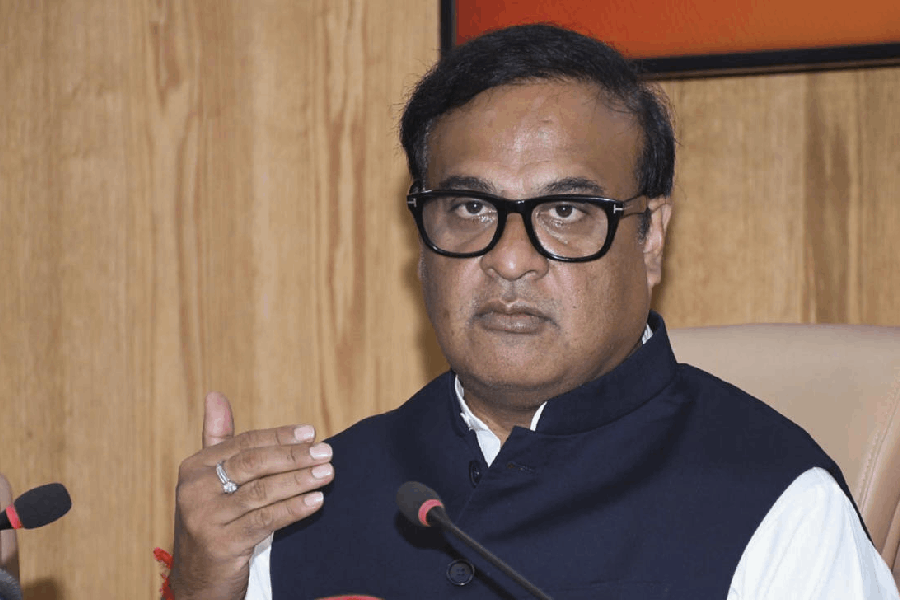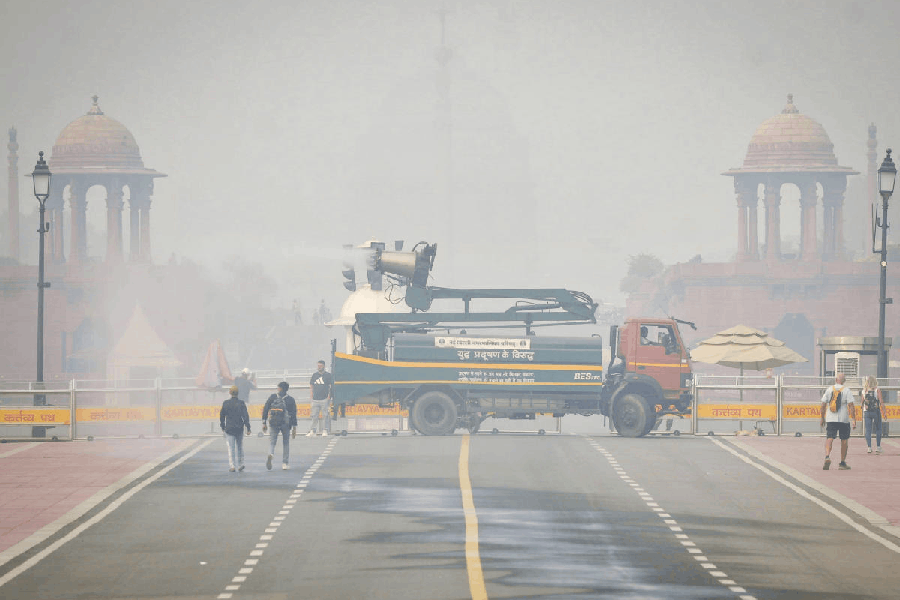 |
Elsewhere, they call it the Brahmaputra but locals know it as the sorrow of Assam. The river swells, year after year, taking lives and livelihoods. And the people of the north-eastern state of Assam pick up the pieces of their lives, and start all over again.
Pranita Rabha will tell you what the floods did to her. The young widow from Lakshipur had five bighas of arable land and there was enough rice from her paddy fields to ensure that she and her two children had two meals a day. But the floods of 2004 devastated Pranita, whose husband died two years ago, leaving behind a money-lender’s loan for her to repay. Her paddy fields were washed away and she could no longer feed her family. Pranita put her son to work in a roadside tea-stall. Two years ago, she had dreamt of educating him. She knows now that she can possibly never send him to school again.
Rabha is among the thousands whose lives are gorged by the floods of Assam. There is nothing new about the floods; Assam has for long been facing the fury of rivers in spate. The annual floods affect over 10 million people out of a total population of 26 million, drawing people into a vortex of misery. Villages get washed away, crops are submerged and livestock drowned. And, of course, there are human casualties as well.
The first wave of floods in Assam this year affected nearly half-a-million people. By the first week of July, the death toll had risen to 11. “Over 40,000 hectares of land were submerged, including 8,000 hectares of cultivable land,” says Bhumidhar Barman, minister for revenue, relief and rehabilitation in the state cabinet.
This year, the torrential rains in the catchment areas of both the Brahmaputra and Barak rivers resulted in the inundation of some 70 villages in the districts of Dhemaji, Nagaon, Nalbari, Jorhat, Tinsukia, Hailakandi and Karimganj.
The damage caused by the annual flood and subsequent erosion is enormous, with thousands of families getting uprooted from their homes. Heavy sand deposition, endangering arable land, is one of the most severe after-affects of the flood. To top it, people have to cope every year with post-flood water borne diseases such as diarrhoea and cholera.
Every year, the floods wreak havoc on agriculture, the economic backbone of the state. The flood waters damage crops, erode paddyfields and deposit sand on arable land, making it infertile.
Several states in India ? the second largest flood-affected country in the world after Bangladesh ? face the problem of floods, but Assam’s situation is unique. With a geographical area of around 78,500 sq km and an annual rainfall of 3,000 mm, Assam is the state most affected by floods in the country. Except the hilly Karbi Anglong and North Cachar Hills, all other areas of the state are identified as flood prone. More than 40 per cent of the total areas of Assam are recorded as flood-affected. In 1988, 60 per cent of Assam was hit by floods.
Not surprisingly, mitigating flood continues to be a major issue in Assam. One school of thought has been propagating embankments as the answer to floods. But ecologists believe that the routine emphasis on reinforcing the river embankments by the flood control department of the state government has had no effect.
Some believe that hydro-electric dams can control the flow of river water, along with producing electricity. A study for the nationwide potential of hydroelectric schemes conducted by the Central Electricity Authority zeroed in on the Brahmaputra river system as the most suitable one for generating hydro-electricity.
The system is believed to have the potential of generating nearly 60,000 mega watt of electricity through hundreds of large dams. Currently, at least 10 large dams have been proposed. They are at the stage of planning and clearance in accordance with the Brahmaputra water basin. Its proponents argue that the large dams will generate power and employment and tackle the floods.
Arup Bhuyan, an engineer based in Guwahati who’s also vice-president of the Assam Real Estate and Infrastructure Developers’ Association (AREIDA), which represents builders’ interests, argues that hydroelectric dams can control flood to a large extent apart from generating electric power. But its opponents are not convinced and argue that large dams in a high-seismic zone such as the northeast would only invite more disasters.
Big dams, stresses Himanshu Thakkar, a social activist currently associated with the South Asia Network on Dams, Rivers and People, do not benefit the people at large. He holds that the social and environmental damage caused by the dams would have to be borne by the common people of the region. “Poor people, who depend on the natural resources around them, would have to pay a heavy price because of these projects,” says Thakkar.
Assam has also often been rocked by debates on whether the bed of the Brahmaputra ? often described as one of the mightiest rivers in the country ? can be dredged. Senior environmentalist Dulal Goswami, however, believes that it would be an impossible job to do, because of the high flow of sand with the river water. “You cannot dredge it because the heavy flow of sands will cover up the channels immediately,” says Goswami.
Amidst all the debates and controversies, the suffering of cultivators and their families continues. The agony of the floods emerges in a devastating form soon after the swelling water recedes. And the waters submerge the hopes of the people.
Take Nilanjana Das, a college student of Nimatighat in Jorhat district. Daughter of middle-class parents, she dreamt of becoming an IAS officer. It was not a hopeless dream, for Nilanjana was a good debater and was interested in quiz contests. The last floods changed her life. Water damaged their entire crop, and the six-member family suddenly had no income. Nilanjana had to stop going to college for the family couldn’t afford her fees anymore. Instead, she is being married off. The family has decided to sell one plot of their arable land to meet the expenditure for her marriage.
For Rabha and Das ? and thousands of others ? the floods don’t just damage their family crops and erode their lands. They also wash away their dreams.










